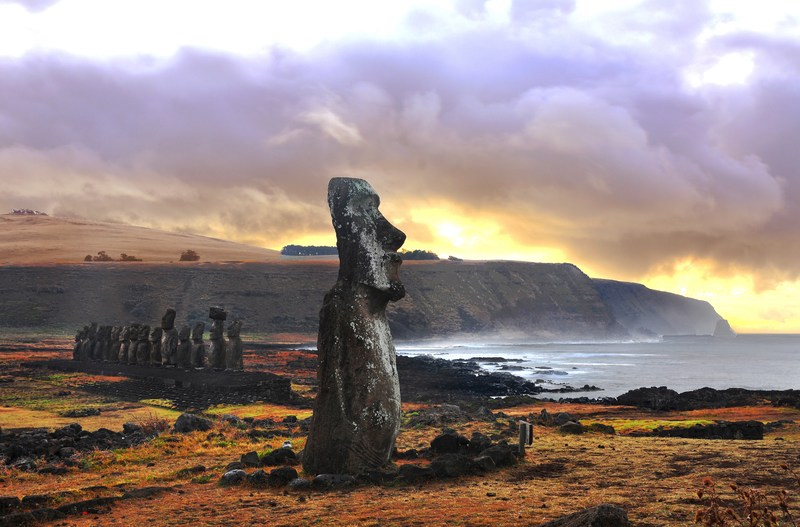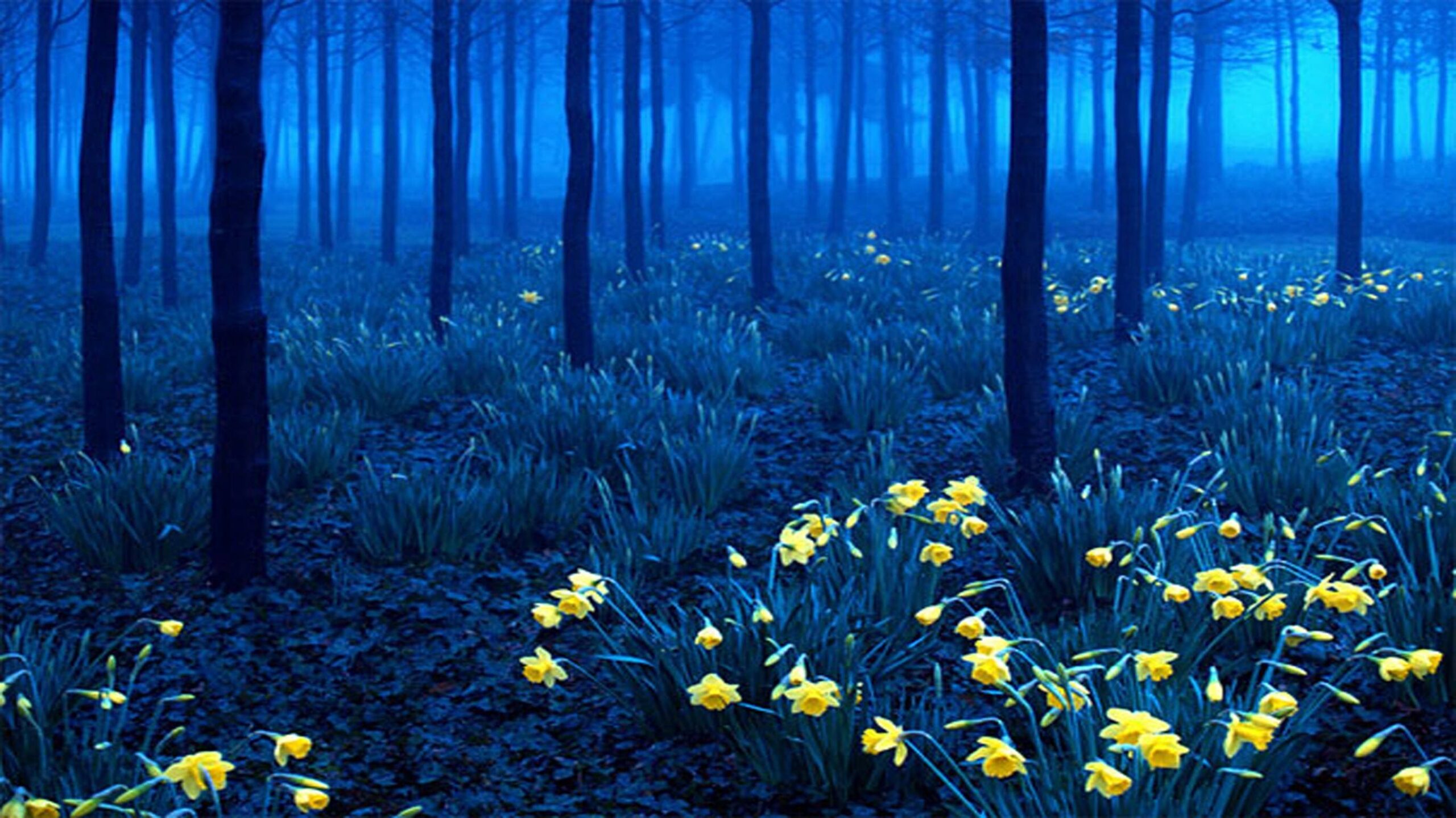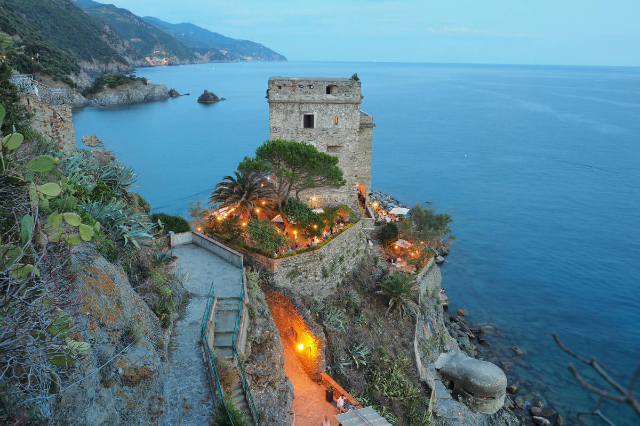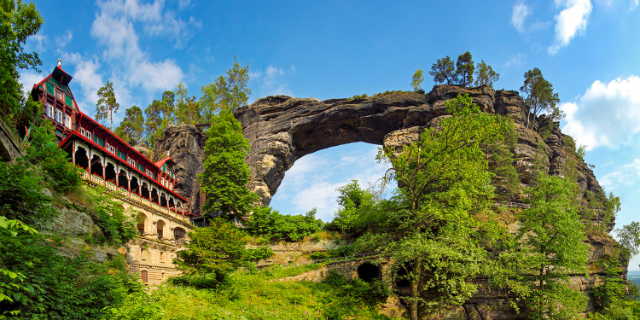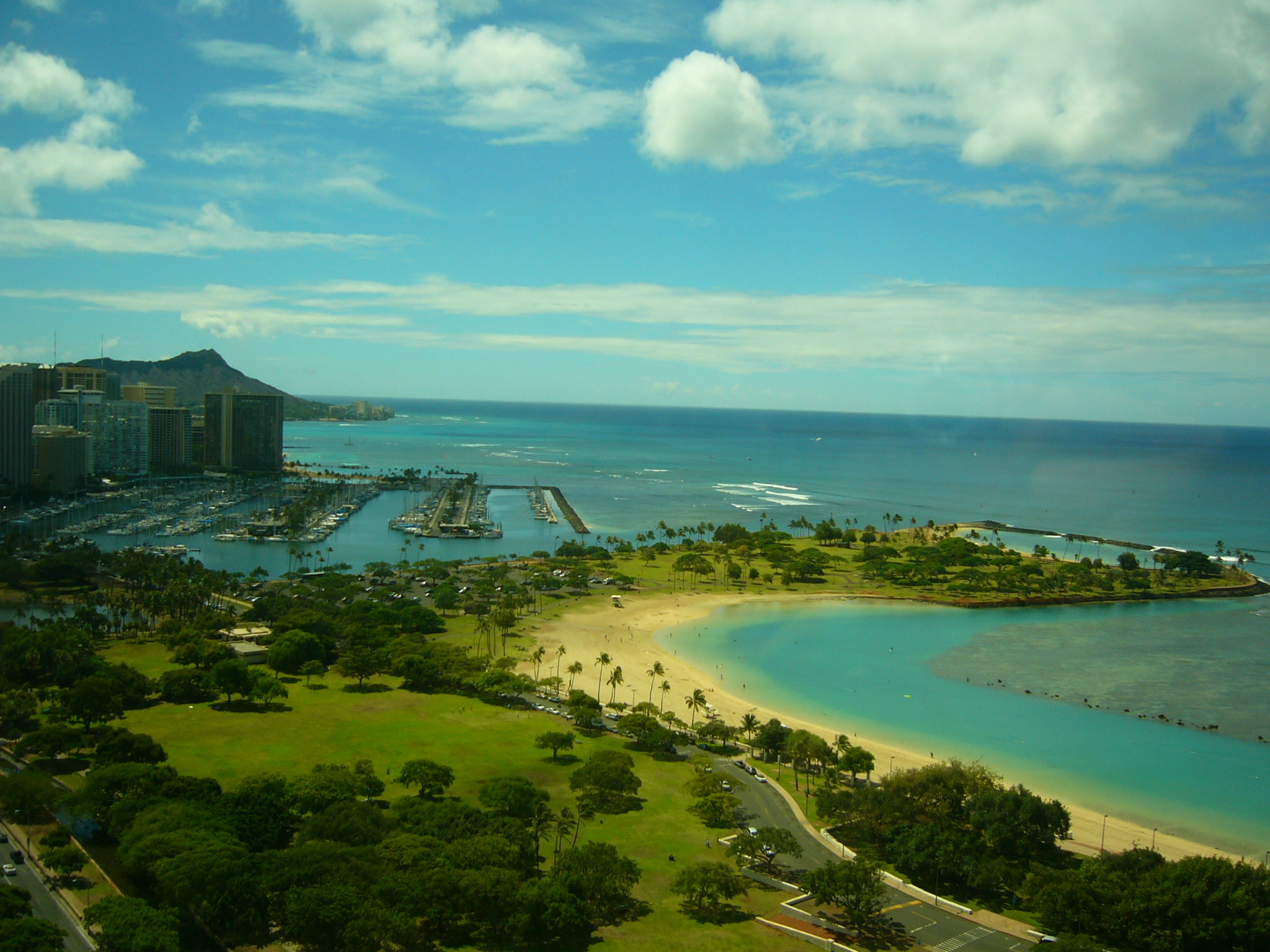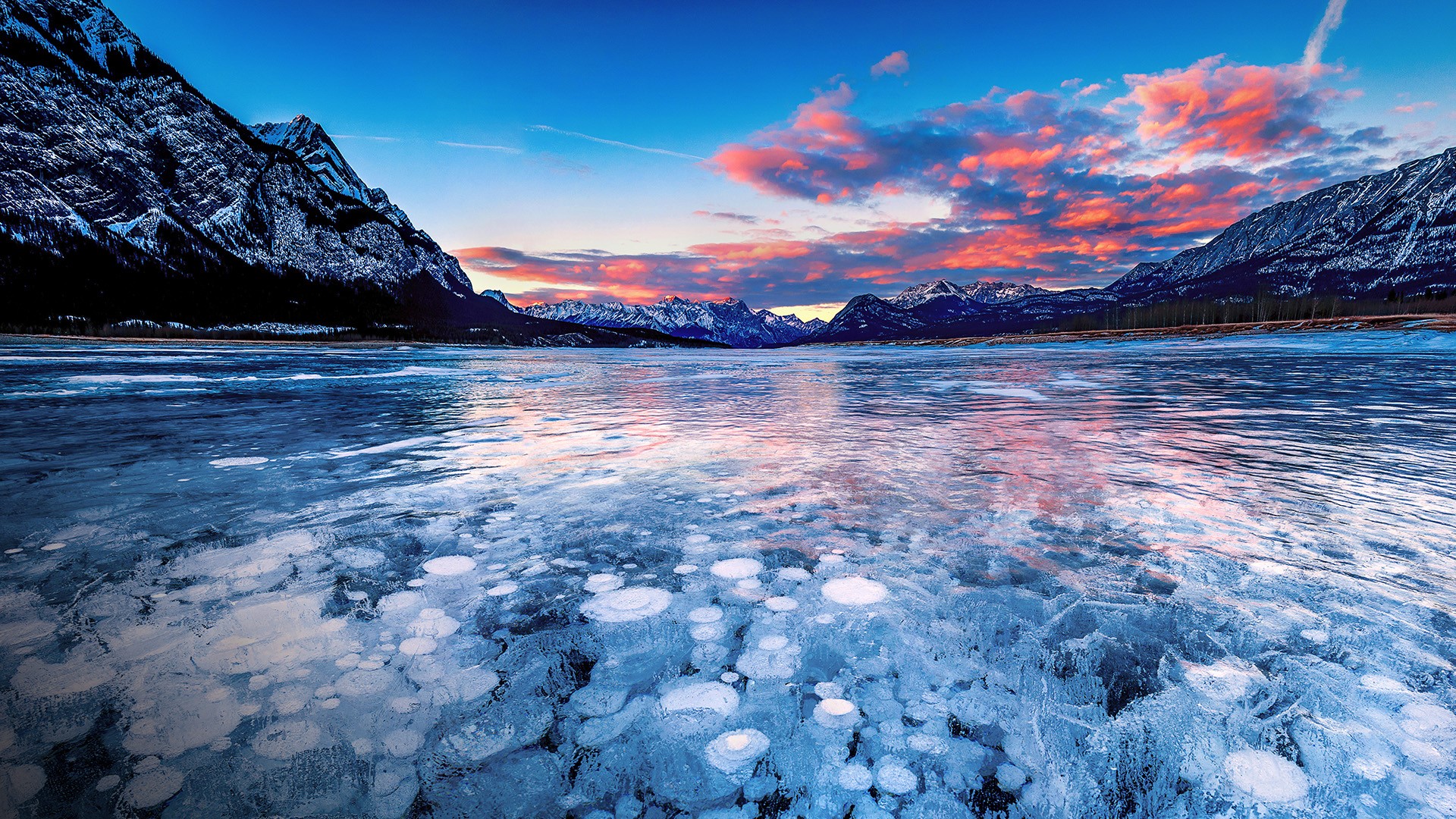Easter Island (Spanish: Isla de Pascua, Polynesian: Rapa Nui) is one of the most isolated islands on Earth. Early settlers called the island "Te Pito O Te Henua" ( Navel of The World). Officially a territory of Chile, it lies far off in the Pacific Ocean, roughly halfway to Tahiti. It is most famous for its enigmatic giant stone statues. Hundreds of years ago, a small group of Polynesians rowed their wooden outrigger canoes across vast stretches of open sea, navigating by the evening stars and the day’s ocean swells. When and why these people left their native land remains a mystery. But what is clear is that they made a small, uninhabited island with rolling hills and a lush carpet of palm trees their new home, eventually naming their 63 square miles of paradise Rapa Nui—now popularly known as Easter Island.
On this outpost nearly 2,300 miles west of South America and 1,100 miles from the nearest island, the newcomers chiseled away at volcanic stone, carving moai, monolithic statues built to honor their ancestors. They moved the mammoth blocks of stone—on average 13 feet tall and 14 tons—to different ceremonial structures around the island, a feat that required several days and many men. Eventually the giant palms that the Rapanui depended on dwindled. Many trees had been cut down to make room for agriculture; others had been burned for fire and used to transport statues across the island. The treeless terrain eroded nutrient-rich soil, and, with little wood to use for daily activities, the people turned to grass. "You have to be pretty desperate to take to burning grass," says John Flenley, who with Paul Bahn co-authored The Enigmas of Easter Island. By the time Dutch explorers—the first Europeans to reach the remote island—arrived on Easter day in 1722, the land was nearly barren.
Although these events are generally accepted by scientists, the date of the Polynesians’ arrival on the island and why their civilization ultimately collapsed is still being debated. Many experts maintain that the settlers landed around 800 A.D. They believe the culture thrived for hundreds of years, breaking up into settlements and living off the fruitful land. According to this theory, the population grew to several thousand, freeing some of the labor force to work on the moai. But as the trees disappeared and people began to starve, warfare broke out among the tribes.
In his book Collapse, Jared Diamond refers to the Rapanui’s environmental degradation as "ecocide" and points to the civilization’s demise as a model of what can happen if human appetites go unchecked.
